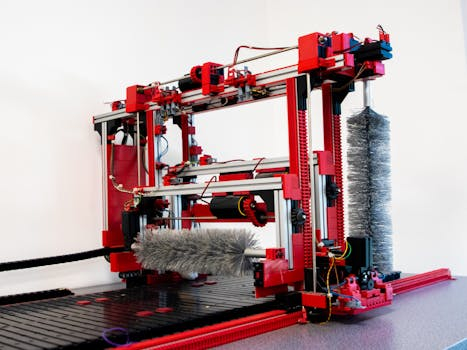RISC-V Revolution: Open-Source Chips Changing the Industry
The tech industry is constantly evolving, pushing the boundaries of what we thought was possible. This continuous shift towards innovation has paved the way for new and disruptive technologies to emerge. One such technology that has been gaining momentum in recent years is RISC-V – an open-source instruction set architecture (ISA) that is revolutionizing the chip industry.
What is RISC-V?
RISC-V, pronounced as “risk-five”, is an open-source ISA that was born out of the need for a free and open standard for chip designs. With traditional chip manufacturers like Intel, ARM, and AMD holding proprietary control over their ISAs, designers were left with limited options for building custom chips. RISC-V, on the other hand, is completely open-source, meaning anyone can access, modify, and distribute the architecture without any licensing fees or restrictions.
The Rise of RISC-V
RISC-V was originally created in 2010 by a team of researchers at the University of California, Berkeley. Their goal was to create an ISA that could be freely used for both academic and commercial purposes. Since its inception, RISC-V has gained significant traction in the industry, with many big players like Google, IBM, Nvidia, and Micron showing support for the architecture. This rise in popularity can be attributed to several key benefits that RISC-V offers.
Benefits of RISC-V
One of the biggest advantages of RISC-V is the flexibility and customizability it offers. With traditional ISAs, designers have to adhere to a specific set of instructions and are limited in their ability to modify them. RISC-V, however, allows designers to create their own custom instructions, making it ideal for building specialized chips for specific tasks. This flexibility also makes it easier to optimize the architecture for a particular application, resulting in improved performance and energy efficiency.
The open-source nature of RISC-V also fosters a collaborative environment, encouraging knowledge sharing and innovation. Companies can freely share their designs, leading to faster and more efficient chip development. This has allowed smaller players in the market to compete with larger, more established companies, promoting healthy competition and driving progress.
Additionally, with the increasing concerns of security and trust in the tech industry, RISC-V offers a more transparent and secure option. By having access to the ISA’s design, designers can thoroughly analyze and audit the code, ensuring that there are no hidden backdoors or security vulnerabilities.
Impact on the Industry
The success of RISC-V has posed a threat to traditional chip manufacturers, who have dominated the industry for decades. With RISC-V gaining support from major companies and gaining popularity among designers, it won’t be long before we see a significant shift towards open-source chip designs. This will not only challenge the existing market but also drive further innovation and advancement in the industry.
Moreover, the increased availability and access to RISC-V means that it can be used in a wide range of devices and applications. This is especially significant for emerging technologies like IoT, AI, and autonomous vehicles, which require specialized chips. With RISC-V, designers can create custom chips that cater to the unique needs of these technologies without relying on expensive proprietary ISAs.
Conclusion
In conclusion, RISC-V is changing the chip industry as we know it. Its open-source nature, flexibility, and potential for innovation have made it a game-changer in the tech world. As more companies and designers adopt this revolutionary architecture, we can expect to see a significant shift towards open-source chips and a more dynamic and collaborative approach to chip design. RISC-V is here to stay, and its impact on the industry will only continue to grow.









